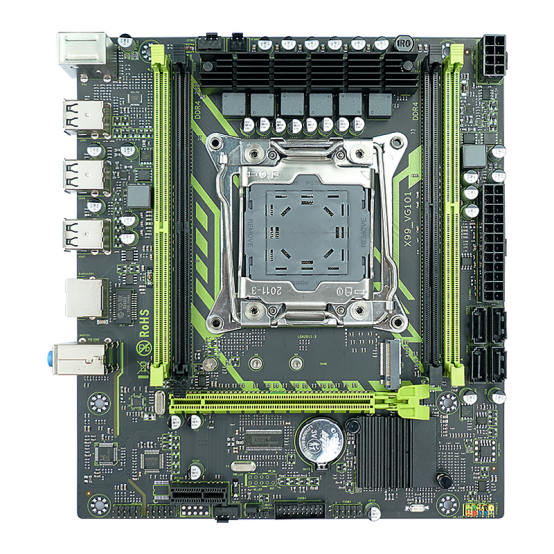How a Computer Motherboard Works
The computer motherboard, often referred to as the "mainboard" or "system board," is the backbone of any computer system. It serves as the central hub where all the essential components of a computer interconnect and communicate with each other. In essence, the motherboard facilitates the flow of data and power throughout the computer, enabling it to function seamlessly. Here's a closer look at how a computer motherboard works.
1. The Central Component
At its core, the motherboard is a flat, rectangular piece of plastic or fiberglass, typically green in color. Embedded within this board are numerous circuits, made up of tiny pathways of conductive materials like copper, that transmit electrical signals. These circuits are etched onto the board using highly precise manufacturing processes.
2. The Processor Socket
One of the most critical components on the motherboard is the CPU (Central Processing Unit) socket. This is where the processor, often referred to as the "brain" of the computer, is installed. The socket is designed to fit a specific type and size of processor, determined by its architecture (e.g., Intel or AMD) and generation. When the processor is securely installed in the socket, it makes electrical contact with the motherboard, enabling it to process data and instructions.
3. Memory Slots
Next to the processor socket, you'll find memory slots, which are typically designed for RAM (Random Access Memory) modules. RAM is volatile memory that temporarily stores data and instructions being processed by the CPU. The more RAM a computer has, the more efficiently it can handle multiple tasks simultaneously. Memory slots come in various types and sizes, such as DDR4 or DDR5, and the motherboard's specification will determine which type of RAM is compatible.
4. Expansion Slots
The motherboard also features expansion slots, which allow users to add additional hardware components to enhance the computer's capabilities. Common expansion slots include PCIe (Peripheral Component Interconnect Express) for graphics cards, high-speed storage drives, and other high-bandwidth peripherals, and PCI (Peripheral Component Interconnect) for older or slower devices. These slots enable the motherboard to accommodate a wide range of hardware, allowing users to customize their computing experience.
5. Storage Interfaces
Modern motherboards come with various storage interfaces, such as SATA (Serial Advanced Technology Attachment) ports for connecting hard drives and SSDs (Solid State Drives), and M.2 slots for high-speed NVMe SSDs. These interfaces provide the necessary connections for storing data and operating systems, ensuring quick access and retrieval times.
6. Input/Output Ports
On the edge of the motherboard, you'll find a variety of I/O (Input/Output) ports that allow the computer to interface with external devices. These include USB ports for connecting peripherals like keyboards, mice, and external storage, audio jacks for headphones and microphones, and video outputs like HDMI or DisplayPort for connecting monitors. These ports enable seamless interaction between the computer and its users and the external world.
7. The Chipset
Another key component on the motherboard is the chipset, which is a set of integrated circuits that manage the data flow between the CPU, memory, and peripherals. The chipset typically includes two main parts: the Northbridge (or Host Bridge), which handles high-speed communications between the CPU, memory, and PCIe devices, and the Southbridge (or I/O Controller Hub), which manages slower peripheral buses like USB and SATA.
8. Power Delivery
The motherboard is powered by the computer's power supply unit (PSU). The PSU converts AC power from the wall outlet into DC power that the motherboard and its components can use. The motherboard's power delivery subsystem, consisting of capacitors, inductors, and MOSFETs, regulates and distributes this power efficiently to ensure stable and reliable operation of all components.
In summary, the computer motherboard is a highly sophisticated and intricate piece of engineering that orchestrates the harmonious operation of all the computer's components. By providing a platform for interconnectivity, facilitating data and power flow, and accommodating a wide range of hardware, the motherboard enables the computer to perform its myriad functions efficiently and effectively. Understanding how a motherboard works can help users make informed decisions when upgrading or building their own computers, ensuring they get the best performance and compatibility for their needs.
Angxun has been in the motherboard industry for more than 20 years.we have focused on the production and research and development ofintel motherboard,all in one motherboard,and Industrial motherboard,server motherboard ,RAM,SSD,CPU,GPU etc.We Registered the brand Angthumb in many countries.You can search www.angthumb.com for more information.

Contact: Tom
Phone: +86 18933248858
E-mail: tom@angxunmb.com
Whatsapp:+86 18933248858
Add: Floor 301 401 501, Building 3, Huaguan Industrial Park,No. 63, Zhangqi Road, Guixiang Community, Guanlan Street,Shenzhen,Guangdong,China
We chat
